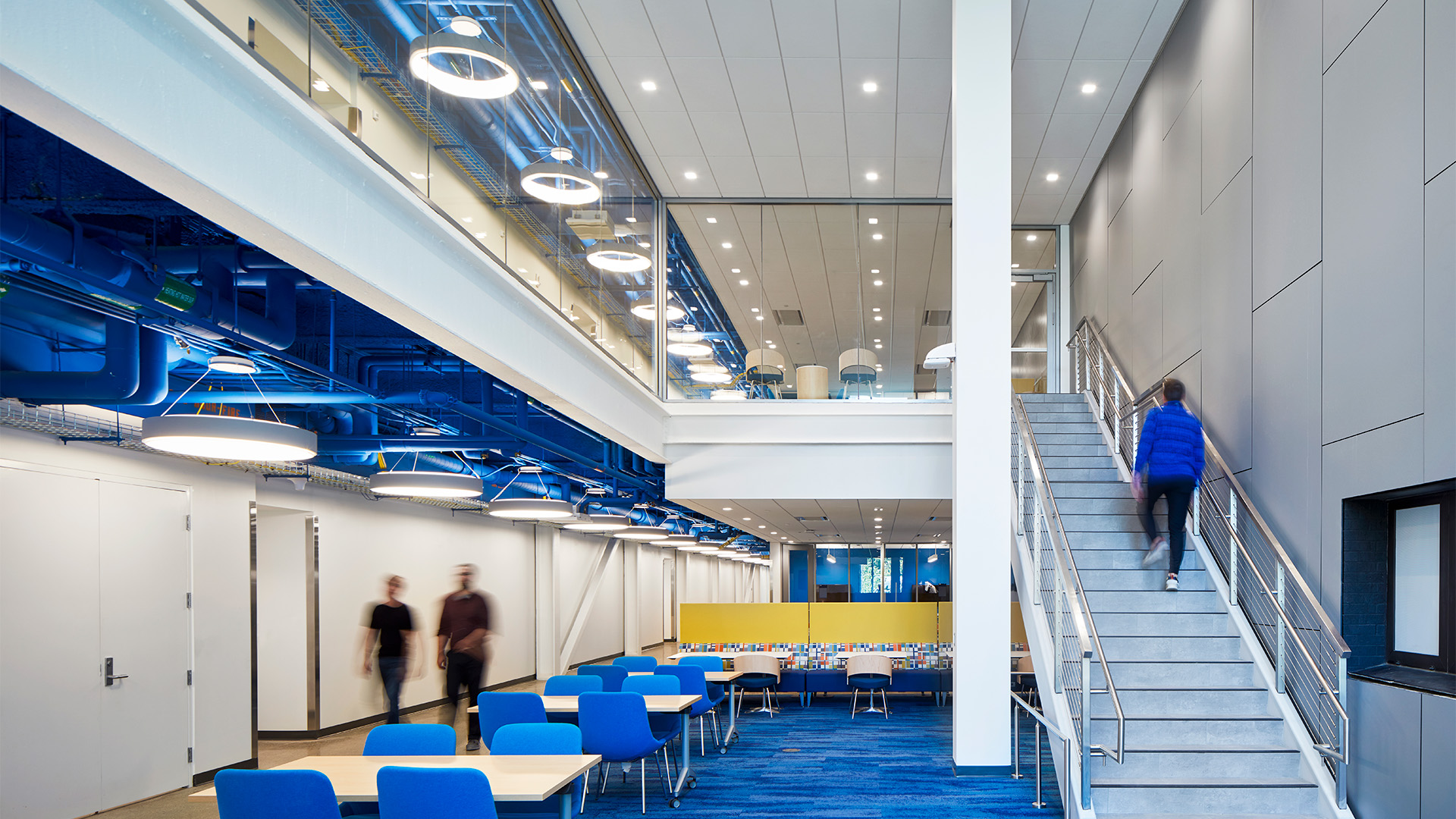Commentary: What’s Ahead for Fire-rated Glazing?

Providing more than functional value
While today’s market conditions continue to impact the future of the built environment, fire- and life-safety codes have and will remain touchstones for building and design professionals. Schools and universities still need to protect occupants against the threat of fire. Commercial buildings and mixed-use facilities are only standing closer together as cities grow denser, increasing the need for lot line protection. And demand remains strong for upgrades to the nation’s existing building stock—many of which require fire- and life-safety updates.
As the industry addresses the ever-tightening building codes guiding these projects, more are turning to fire-rated glass to provide beautiful spaces that will perform as needed today, tomorrow and years from now. This begs the question: how can building and design teams make the most of this hardworking material?
One guiding principle is to keep the end user in mind. While fire-rated glass’ primary purpose will always be to protect people and property in the event of a fire, its secondary role is to help buildings work better for their occupants. As such, the more completely a design team understands user intent, the better their ability to specify, create or install fire-rated glass and framing systems that provide more than functional value. While there isn’t a one-size-fits all solution given the highly custom nature of modern building design, we’ve found keeping the following strategies in mind can help teams satisfy both occupant needs and building codes.
Promote human health with large glazed lites
In recent years, oversized glazed lites have evolved from a design tactic into an effective means of improving human health and enjoyment. Not only does increasing the glazed area allow more natural daylight to pour into buildings, but it also supports visual connectivity between spaces to foster a sense of community for occupants. Rather than being walled off in their respective rooms, people can engage with those around them or simply enjoy a sense of shared openness. This has grown increasingly important as providing a safe visual connection in the real world can also alleviate some of the isolation many have felt navigating social interactions through screens over the course of the last two years.
Given the continued need to prioritize human health, it is reasonable to expect the more-glass trend will dominate for the foreseeable future. By looking to large fire-rated glazed lites and expansive assemblies, building and design teams can carry the transparent glass ethos into even the most challenging code-driven areas. Fire-rated glazing systems can soar from wall-to-wall and across multiple stories, making it easier than ever before to defend against fire while encouraging safe, interactive spaces. Developments in retaining fire-rated glazing have further expanded the opportunities for occupant-centered building compartmentation. Whether the need is for oversized glazed lites, a glass curtain wall system or an interior butt-glazed wall, there is now almost always a fire-rated solution that promotes the user experience.
Prioritize safety and security with multifunctional systems
When it comes to addressing the occupant experience, another key area of emphasis is heightening the safety and security of buildings. While this was once a simple matter of providing fire protection or impact-safety protection, there is growing need for forced-entry resistance to enable the enactment of lockdown protocols. This is as true for schools and universities, as it is for government buildings, medical facilities and commercial/retail spaces.
New multifunctional systems like TGP’s TGProtect™ FR System, a fire-rated full-lite glass door system certified to forced entry standards, now make it possible for firms to easily meet this demand. All system components have been jointly tested to ensure they will perform as intended, regardless of whether there is a fire or security breach.
Importantly, while there are no established occupancy code requirements in place to help govern this process currently, task groups, school boards, manufacturers and security consultants are working hard to put uniform policies and tools in place. In the interim, by selecting a multifunctional fire-rated glazing system, design teams can help ensure buildings provide adequate life safety and security needs now and in the future.
Do more with less
As fire-rated glazing systems continue to evolve and grow more sophisticated, the design intent behind common egress installations is starting to shift in favor of building occupants. Instead of simple punched out openings, egress corridors now feature continuous fire-rated glass walls to promote synergy and vision. Likewise, soaring fire-rated glass curtain walls can now incorporate low-emissivity and spandrel fire-rated glazing to respond to the angle of daylight and support balanced light transfer. These capabilities make it possible to do more with less—expanding when, where and how fire-rated glass can be used as we learn more about occupant interactions.
Take for example, fire-rated and forced-entry resistant glazing systems. While initially installed in vestibules and exterior points of entry to keep intruders from going into and out of the building, we now know it remains common for active shooters to already be within a school. This has brought to light the need to provide additional protection for students and faculty within school walls. With today’s multifunctional systems it is possible to meet current fire-rated codes while also creating areas of refuge for students and staff.
Expect more of glass and those who design with it
As building designs and glass applications grow more complex and the opportunities for fire-rated glazing increase, it is also becoming more and more difficult to ensure all individual components within a given system will work in harmony. Consider the example of bolstering school safety and security above. Because many forced-entry materials are highly flammable, pairing them with fire-rated glass and frames could compromise the entire system’s fire safety. Knowing how these components work with or against each other can prolong the design process and may lead to systems that could potentially fail in the field. These problems can be mitigated by specifying system-tested products.
When components are tested together, the entire system receives applicable ratings. This sidelines the need to research individual components and decreases the chances of potential errors that may appear at any point in the design process. As such, this approach not only ensures a system will perform as intended after installation, but it also simplifies the specification process, which can help teams finalize designs and request systems faster.
Designing for the future, designing for the user
“The only constant in life is change,” is an often-cited phrase from Heraclitus. When it comes to building design, this is true—code requirements change, technology changes what is possible with materials and demands about what is essential for buildings change. But through all this change, there is a constant, designing with the physical safety and psychological wellbeing of a building’s occupants.
While it may be impossible to forecast fully what changes we can expect in future design trends, we do know buildings need to provide comfort, safety and security for their occupants. As we look to the future, let’s ensure we continually adjust our strategies to achieve code-driven requirements with the end-user in mind.


 David Vermeulen is North America Sales Director for Technical Glass Products and also the author of the Fired Up blog on Glass Magazine.
David Vermeulen is North America Sales Director for Technical Glass Products and also the author of the Fired Up blog on Glass Magazine.